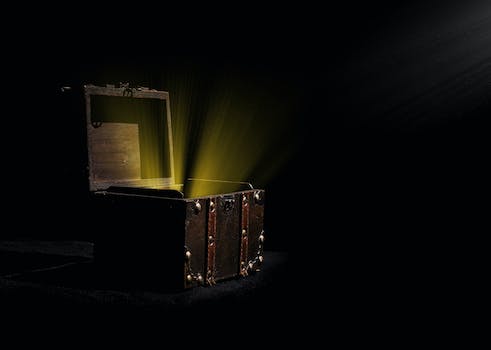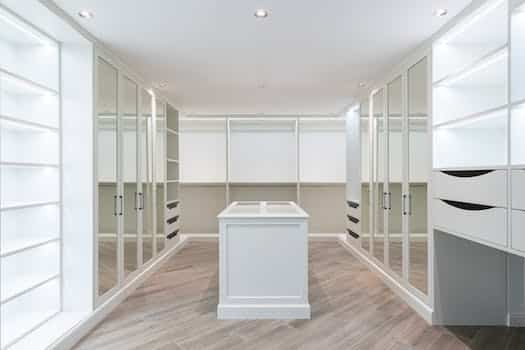The appropriate storage solutions may turn a laundry room into a highly efficient and functional space, but this room is often disregarded. Storage solutions exist for both large and small laundry rooms, allowing you to make the most of your space and maintain order. Here, we’ll discuss a few smart places to put things so that you may make your laundry room less cluttered and more organized.
- 1. Efficient Storage for Laundry Rooms
- 1.1. 1. Assessing Your Laundry Room Space
- 1.2. 2. Maximizing Vertical Storage
- 1.3. 3. Utilizing Underutilized Spaces
- 1.4. 4. Sorting and Labeling Bins and Baskets
- 1.5. 5. Creating a Folding Station
- 2. Assessing Your Laundry Room Space
- 2.1. 1. Measuring Your Laundry Room
- 2.2. 2. Identifying Dead Spaces
- 2.3. 3. Taking Inventory of Your Laundry Supplies
- 2.4. 4. Analyzing Your Laundry Habits
- 2.5. 5. Considering Future Needs
- 3. Maximizing Vertical Storage
- 3.1. 1. Installing Wall-Mounted Shelves
- 3.2. 2. Hanging a Pegboard
- 3.3. 3. Using Over-the-Door Organizers
- 3.4. 4. Mounting a Drying Rack
- 3.5. 5. Incorporating a Tall Cabinet
- 4. Utilizing Underutilized Spaces
- 4.1. 1. Installing a Pull-Out Ironing Board
- 4.2. 2. Using the Space Above Your Machines
- 4.3. 3. Integrating a Rolling Cart
- 4.4. 4. Building a Custom Shelving Unit
- 4.5. 5. Repurposing a Closet
- 5. Sorting and Labeling Bins and Baskets
- 5.1. 1. Choosing the Right Containers
- 5.2. 2. Sorting Your Laundry Supplies
- 5.3. 3. Labeling Your Containers
- 5.4. 4. Designating Specific Bins for Family Members
- 5.5. 5. Incorporating a Hamper System
- 6. Creating a Folding Station
1. Efficient Storage for Laundry Rooms
Laundry rooms require adequate storage in order to perform properly. You may maximize the effectiveness of your laundry room by implementing any number of storage strategies. Putting shelves or cupboards above your washer and dryer is a great way to keep laundry necessities out of the way but still easily accessible. Smaller supplies, such as detergent, fabric softener, and stain removers, can be kept in baskets or containers. If you’re short on floor space, consider mounting a drying rack on the wall. Alternatively, a retractable clothesline might be installed and deployed with minimal effort. A well-organized laundry room is possible with the help of these space-saving storage options.
1.1. 1. Assessing Your Laundry Room Space
It’s crucial to take stock of the laundry room’s available square footage before you begin planning smart storage options. Think about the room’s layout, how many appliances you have, and how much space you have for storage. You can better imagine where to put more storage by drawing a floor plan after taking measurements of the room. Just as vital as horizontal space efficiency is vertical space efficiency.
1.2. 2. Maximizing Vertical Storage
Laundry rooms typically have limited square footage. Vertical storage solutions are a great way to make the most of the space you have. Shelving and cupboards that ascend to the ceiling are one option, as are over-the-door hangers and wall-mounted laundry baskets. By making the most of vertical space, even a modest laundry room can be kept neat and clutter-free.
1.3. 3. Utilizing Underutilized Spaces
Space for storing items is typically limited in laundry rooms. However, you may make effective storage solutions for your laundry room with some creative planning and the use of unused places.
The region over the laundry machines is frequently disregarded. Laundry detergent, fabric softener, and dryer sheets take up a lot of space, but you may make room for them by installing shelves or cupboards above the appliances. Children and pets are safer with these objects out of reach.
The rear of the door is another unused area of a laundry room. Cleaning supplies, ironing boards, and hangers are just some of the many goods that can be stored in an over-the-door organizer. You’ll be able to maintain your laundry room neat and tidy while also making better use of the available space.
Finally, you can store things in the area between the washer and dryer. Laundry baskets, ironing boards, and cleaning supplies can all find a home in a slim cabinet or shelving unit. Not only will this help you conserve room, but it will also ensure that these products are always close at hand.
1.4. 4. Sorting and Labeling Bins and Baskets
Creating a functional laundry room storage system begins with sorting and labeling baskets and containers. Sorting soiled items by color, fabric, or family member can help you get laundry done faster. The use of clearly labeled containers is also useful for this purpose. Use transparent containers or baskets so you can see what’s inside at a glance. The contents of each box can be easily recognized thanks to labels or color-coded tags. You may make better use of your laundry room space and time by sorting and labeling the items stored inside.
1.5. 5. Creating a Folding Station
Having adequate area to fold clothing and store laundry supplies is a common problem in laundry rooms. Consider installing a folding station in your laundry room to address this issue. Putting in a new table or countertop is one example; constructing new cabinets and shelving is another. Make sure there’s enough room to stretch out garments and put everything you need within easy reach at your folding station. You can maximize your available space and simplify your washing routine by setting up a folding station.
2. Assessing Your Laundry Room Space
Before you install any shelves or cabinets in your laundry room, you should measure the available floor space. Get started by measuring the space and making a list of any potential obstacles like furniture or windows. Think about the room’s layout and how you’ll be moving around in there as you wash laundry. Consider the frequency with which you will be accessing the items you need to save. Your needs for space-saving and laundry-day-streamlining storage options can then be better estimated.
2.1. 1. Measuring Your Laundry Room
It’s important to take stock of your laundry room’s square footage before you start planning storage solutions. Start by taking accurate measurements of the room’s dimensions, including the floor and ceiling. Don’t forget to factor in any odd angles or corners that may impact how your storage is organized. Obtaining precise dimensions is the first step toward making the most use of a given area.
2.2. 2. Identifying Dead Spaces
Recognizing any empty corners or corners that lead nowhere in the laundry room is the first step in planning for storage options. Dead spaces include corners, odd angles, and locations that are too high or low to approach comfortably. Look around your laundry room and make a mental note of any awkwardly placed or unused spaces. These unused corners could be the solution to your laundry room’s storage woes.
2.3. 3. Taking Inventory of Your Laundry Supplies
Taking stock of your laundry supplies is a necessary first step before tackling the laundry room’s organization. All the goods you normally use, such as laundry detergent, fabric softener, spot remover, bleach, and so on, fall under this category. Make a list of what needs to be replenished and how much is left of each item. In addition to assisting with organization, this will end up saving you time and money.
2.4. 4. Analyzing Your Laundry Habits
Identifying the best storage solutions for your laundry room requires first understanding how you already handle your clothes. Think about how often you wash clothes and what you usually wash. This will give you a better idea of the size and shape of the storage unit required to house your laundry equipment. Think about whether you’ll need a folding table, a spot to store cleaning products, or a place to hang clothing to dry. The first step in making your laundry room more effective is to take an honest look at the space you have.
2.5. 5. Considering Future Needs
Think ahead about what you’ll need in the laundry room in terms of storage solutions. Do you hope to have more children in the future? Do you plan on expanding your current wardrobe? All of these factors should be considered in tandem with the size of your laundry room. Make sure your storage options not only meet your demands now, but can accommodate any anticipated future expansion.
3. Maximizing Vertical Storage
Laundry room storage options that make the most of vertical space are ideal. Storage for linens, cleaning supplies, and other necessities can be expanded by maximizing the vertical space available in a room. Items can be kept off the floor and out of the way by installing shelves, cupboards, and hanging racks. Consider employing shelves that can be moved to maximize storage for objects of varying sizes. Keep things neat and tidy by labeling and storing your belongings appropriately.
3.1. 1. Installing Wall-Mounted Shelves
Mounting shelves on the wall is a simple method to add much-needed vertical space to your laundry area. You may maximize your laundry room’s storage capacity without taking up any extra room on the ground by making the most of the vertical space available. It’s crucial to place wall shelves in a convenient spot that won’t get in the way of traffic or other fixtures. Be sure to take accurate measurements of the area before making any shelf size decisions. When you finally have the shelves, make sure they’re level by using a level and mount them to the wall using the right hardware.
3.2. 2. Hanging a Pegboard
Pegboards are one of the most convenient and often used methods of adding vertical space to a laundry room. A pegboard can be used to hang and categorize a wide variety of laundry supplies, such as detergents, fabric softeners, and spot removers. It’s also a great way to keep brooms, mops, and dustpans out of the way. Pegboard installation is a quick and easy weekend project that may make a big difference in how well your laundry room functions.
3.3. 3. Using Over-the-Door Organizers
To make the most of the available vertical space in a laundry room, over-the-door organizers are a great investment. These containers are available in many shapes and sizes, making them ideal for stowing a wide range of things. Cleaning materials, laundry items, and even garments that need to be ironed can all find a home in over-the-door organizers. These organizers are a great way to keep your laundry room neat and tidy without taking up any extra floor space.
3.4. 4. Mounting a Drying Rack
Mounting a drying rack to the wall is a great method to make the most of the available vertical space in a laundry room. Those who are limited in floor space or who simply prefer to keep their laundry off the ground may appreciate this. Drying racks can be hung from the ceiling or the wall, and some models are even retractable. Think about the square footage of your laundry room and the frequency with which you do laundry before making your selection. The rack must be strong enough to support the weight of the wet clothes. A drying rack, once erected, can provide a space-saving and practical solution for drying garments.
3.5. 5. Incorporating a Tall Cabinet
A great approach to make the most of vertical space in a small laundry room is to install a tall cabinet. You have the option of adding shelves, drawers, and even hanging rods to tall cabinets, so they may be tailored to your specific storage requirements. Utilizing the available vertical space in your laundry room will allow you to keep all of your laundry supplies neatly stored and within easy reach. You can save space by putting a tall cabinet adjacent to your laundry room’s appliances.
4. Utilizing Underutilized Spaces
Laundry rooms are often tight in square footage. Creative problem-solving, however, can turn otherwise wasted space into useful storage. The region over the laundry machines is frequently disregarded. Laundry supplies like detergent, fabric softener, and dryer sheets can be conveniently organized in shelves or cabinets. You may also use the back of the door to the laundry room to store smaller goods like cleaning supplies, clothespins, and hangers by hanging a shoe organizer or other hanging organizers. Laundry baskets and hampers are only two examples of pull-out or slide-out storage solutions for keeping filthy clothes out of sight and off the floor. Make the most of your laundry room’s storage capacity and improve its organization and functionality by making use of these unused areas.
4.1. 1. Installing a Pull-Out Ironing Board
Most people are surprised to learn how long remote work technology has been around. In reality, Jack Nilles first popularized the term “telecommuting” in the 1970s and the concept of working remotely at that time. However, remote work didn’t become practical until the internet and personal computers became widely available. In the late 1980s and early 1990s, tools for remote work such as email and chat began to appear, and they were swiftly superseded by more sophisticated technology such as video conferencing and virtual collaboration platforms. Technology that allows us to operate from a distance is becoming increasingly sophisticated, and this is altering our working and living environments in significant ways.
4.2. 2. Using the Space Above Your Machines
Due to the COVID-19 pandemic, remote work technology has become more crucial than ever. Technology that facilitates remote work has allowed businesses to rapidly adopt a new way of operating in response to the global skills gap. This article will discuss the most exciting developments in remote work technology, as well as the advantages of these developments for both employers and employees.
4.3. 3. Integrating a Rolling Cart
A rolling cart can be a convenient storage option for laundry facilities. The space between the washer and dryer, as well as unused corners of the room, can benefit greatly from this. Laundry essentials like detergent, softener, and dryer sheets may all find a home in the mobile cart. It can serve as a place to fold laundry or store clean items. You can make laundry day easier by making the most of your laundry room by making use of this underutilized area.
4.4. 4. Building a Custom Shelving Unit
When working from home, it can be difficult to strike a good work-life balance. Separating one’s professional time from one’s personal time is one strategy for striking this balance. Establishing and sticking to a schedule can help you stay focused and productive at work and provide you time to unwind and reenergize outside of work. Making a plan that specifies your work hours, breaks, and other activities can be helpful. This will help you stay focused, prevent burnout, and fulfill your professional and personal commitments without sacrificing your sanity.
4.5. 5. Repurposing a Closet
A closet is generally one of the most unused areas of a house. A closet can be converted into useful laundry room storage with a bit of ingenuity. Laundry supplies like detergent, fabric softener, and bleach can have their own dedicated space in your home if you remove the closet doors and install some shelves. A clothes drying rack or hanger rack can also be installed. Extra space on the shelves means more room for baskets of clean and dirty clothes. To make the most of your laundry room’s limited square footage, convert an unused closet into useful storage space.
5. Sorting and Labeling Bins and Baskets
In recent years, video conferencing has emerged as a crucial tool for distant work. Video conferencing has allowed for face-to-face communication between remote workers and their managers despite great distances. Companies have been able to cut down on their carbon footprint and travel expenses as a result of technological advancements. Video conferencing is already a standard tool in today’s fast-paced business world.
5.1. 1. Choosing the Right Containers
Maintaining a positive work-life balance can be facilitated by making time for enjoyable pursuits outside of work. The lines between professional and personal time can easily blur when you work remotely, so it’s crucial to make sure you schedule in time for the things that make you happy and help you recharge. Whether it’s working out, reading, painting, or something else, it’s a good idea to set aside time every week to indulge in your favorite pastime. If you make time for these pursuits, you’ll probably find that you’re more energized and ready to work when you get back.
5.2. 2. Sorting Your Laundry Supplies
Avoiding burnout and keeping productivity high requires remote workers to strike a healthy work-life balance. One way to strike this balance is through asking friends and family for help. To avoid overworking or getting distracted while at work, it is necessary to communicate your work schedule with your colleagues and loved ones and to set clear boundaries. Having someone you can lean on to help you through tough times can reduce anxiety and boost morale. You can recharge and stay connected by engaging in social activities with loved ones and by reaching out to coworkers for feedback and collaboration.
5.3. 3. Labeling Your Containers
One crucial part of getting organized is labeling your storage containers. Finding what you need is facilitated, and everything is returned to its rightful location. The laundry room storage containers can be labeled in several ways. A label maker, a permanent marker, or adhesive labels could be used to label the containers. Whatever system you use, be sure to clearly identify the contents of each storage unit.
5.4. 4. Designating Specific Bins for Family Members
More and more businesses are allowing their staff to work remotely as part of a growing trend toward flexible work arrangements. The necessity for firms to remain competitive in a global marketplace has prompted this change, along with technological developments that have made remote work more practical, shifting views toward work-life balance, and other considerations. As a result, remote work technology is becoming increasingly vital, and there are a lot of interesting developments to keep an eye on.
5.5. 5. Incorporating a Hamper System
The effectiveness of your laundry room may be enhanced by the addition of a hamper system. Make sorting clothes as you go much simpler by using separate hampers for different loads (whites, darks, delicates, etc.). This will save you time because you won’t have to sort anything out before washing it. The absence of random mounds of washing is another advantage of a hamper system for the laundry room. You should think about getting a hamper set up that works for your needs and laundry routine.
6. Creating a Folding Station
It is anticipated that AI will play a pivotal role in the development of tools that facilitate remote work in the near future. AI’s data-processing and task-automation capabilities mean it can improve the efficiency and effectiveness of remote teams. Virtual assistants powered by artificial intelligence can aid in time management, task prioritization, and even productivity advice. AI can also help in employment by doing things like reviewing applications and conducting preliminary interviews. Artificial intelligence (AI) is becoming increasingly common in remote employment as technology improves.
6.1. 1. Choosing the Right Table or Countertop
The correct table or countertop is essential when setting up a folding station in the laundry room. It needs to be functional enough to keep all of your dirty clothes, yet aesthetically pleasing enough to not detract from the rest of the room’s decor. Before settling on a solution, evaluate the available space in your laundry room. If you’re short on storage space, a folding table that collapses for compact storage could be a lifesaver. However, folks with larger laundry rooms who require additional surface area for folding and sorting may benefit from a larger countertop. Think about the countertop or table’s material, as well. If you want it to survive for a long time and get a lot of use, splurging on a tough material like granite or quartz could be worthwhile.
6.2. 2. Adding Storage Underneath Your Folding Station
Including storage underneath your folding station is a great way to make the most of your laundry room. If your living quarters are cramped, you’ll appreciate this feature even more. Laundry baskets, cleaning supplies, and finishing touches like dryer sheets can all find a home here.
Folding stations with storage options can be purchased ready-made or constructed by the homeowner. You may construct a stable foundation for your folding station out of plywood, 2x4s, and brackets if you opt to do it yourself. The necessary storage space can then be made by attaching drawers or shelves to the base.
Be sure to take accurate measurements of the available area before deciding on a location for your folding station. It’s important to measure the washer and dryer’s footprint to ensure they’ll fit in your laundry room without crowding the space. It’s possible to have a laundry room that’s both functional and pleasant to use with just a little amount of forethought and work.
6.3. 3. Utilizing Wall Space for Hanging Storage
Hanging shelves and cabinets are a smart way to make the most of available space in a laundry room. Put up a pole or hooks to hold cleaning tools like dustpans, brooms, and ironing boards. Items like laundry detergents and fabric softeners can be stored in hanging organizers or baskets. This not only helps with decluttering, but it also keeps everything neatly organized and within reach. If you’re having trouble keeping your laundry room neat and tidy, you might want to install a pegboard or slatwall system. Depending on your needs, you can modify these systems by adding or removing hooks, shelves, and other accessories.
6.4. 4. Incorporating a Built-In Ironing Board
A built-in ironing board is a space-saving addition to any laundry room. This not only simplifies ironing but also frees up valuable storage space. Mounting an ironing board inside a cabinet or on a wall provides convenient storage when it is not in use. It can be made to fold down or slide out for even more practicality. All things considered, a built-in ironing board is a wonderful addition to any laundry room that values efficiency and minimalism.
6.5. 5. Personalizing Your Folding Station
Adding touches of your personal style to the laundry room is easy to do by customizing the folding station. Adding a colorful mat or rug, storing laundry supplies in stylish baskets or boxes, and hanging up photos or artwork on the walls around the folding station are all easy ways to make the space feel more like your own. To give some life to the room, put together a modest plant or flower arrangement. You may make your folding station more than just a place to fold clothes by adding your own touches.
Conclusion
A well-organized and spacious laundry room begins with smart storage solutions. There are a variety of choices available to meet your storage needs, from stationary cabinets to mobile carts. Laundry rooms can be transformed into pleasant and practical workspaces with well-planned storage solutions.






These 10 innovative and imaginative DIY home decor ideas from [object Object] provide a refreshing approach to enhancing ones living…